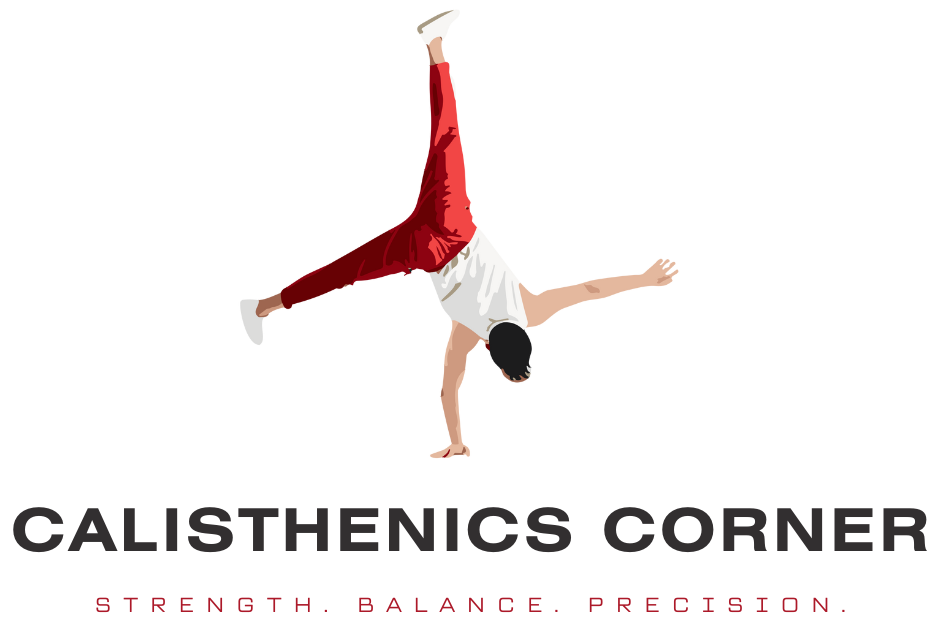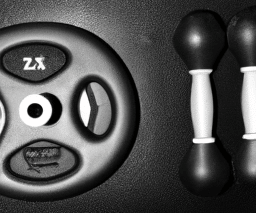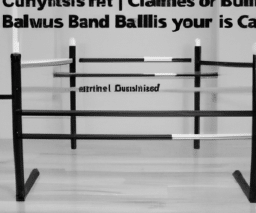If you’re into calisthenics or considering trying it out, you might be wondering how long your workouts should be to achieve optimal results. This article explores the ideal duration for a calisthenics workout, taking into account various factors such as fitness level, goals, and overall health. Whether you’re a beginner looking to get fit or an experienced calisthenics enthusiast aiming to challenge your limits, finding the right length for your workout is essential to ensure progress and avoid burnout. So, let’s delve into this topic and discover the perfect duration for a fruitful calisthenics session.
Factors to Consider
When it comes to creating a calisthenics workout routine, there are several factors that you need to consider. These factors will help you determine the duration and intensity of your workouts, as well as the specific exercises that you should incorporate. By taking these factors into account, you can create a workout routine that is tailored to your individual needs and goals. Let’s explore each of these factors in more detail.
Fitness Level
Understanding your fitness level is essential when designing a calisthenics workout routine. You need to assess whether you are a beginner, intermediate, or advanced in terms of your fitness abilities. This will help you determine the difficulty level of your exercises and the progression that you should aim for.
If you are a beginner, it’s important to start with basic exercises that are suitable for your current strength and endurance capabilities. As you progress and become more comfortable with the movements, you can gradually increase the difficulty level and intensity of your workout routine. Intermediate and advanced individuals have more options and can incorporate more challenging exercises into their routines.
Goals
Another crucial factor to consider is your fitness goals. What are you trying to achieve with your calisthenics workouts? Identifying your goals will help you create a routine that aligns with them. Some common goals in calisthenics include weight loss, muscle gain, endurance improvement, flexibility enhancement, and overall fitness improvement.
If your goal is weight loss, you may focus on exercises that burn calories and increase your heart rate. For muscle gain, you would incorporate exercises that target specific muscle groups. If endurance is your focus, you would design a routine that includes exercises that challenge your cardiovascular system. Flexibility goals would involve incorporating stretches and mobility exercises, while overall fitness goals would require a well-rounded routine that encompasses various aspects of fitness.
Time Availability
Time availability is an important factor that often gets overlooked. You need to assess how much time you can commit to your calisthenics workouts. This will determine the duration of each session and help you plan your routine accordingly. It’s crucial to choose a workout duration that fits into your schedule and allows you to remain consistent with your training.
If you only have a short amount of time available, you can opt for a quick and intense workout that targets multiple muscle groups. For those with a moderate amount of time, a well-rounded full-body routine is ideal. If you have more time to spare, you can incorporate additional exercises and take longer breaks between sets, resulting in a more extended and intense session.
Intensity
The intensity of your calisthenics workouts is another critical factor to consider. It refers to the level of effort and challenge that you put into your exercises. The intensity can have a significant impact on how your body responds to the workout and the results you achieve.
High-intensity workouts are characterized by shorter periods of work with maximum effort, followed by brief rest or recovery periods. These types of workouts are excellent for improving cardiovascular fitness and burning calories. Moderate-intensity workouts involve performing exercises at a steady pace, challenging but not overly demanding. Low-intensity workouts focus on slower movements and lighter resistance, providing a more relaxed and less intense experience.
Frequency
Determining the frequency of your calisthenics workouts is essential for consistency and progress. It refers to how often you train in a given week. The right frequency depends on your fitness level, goals, and time availability.
If you’re a beginner or have limited time, starting with a daily routine may not be realistic or sustainable. In such cases, alternating workout days or training three times a week is a suitable approach. For those with more time and higher fitness levels, training daily or five to six times a week can yield excellent results. Ultimately, finding a frequency that allows for adequate rest and recovery while still challenging your body is crucial.
Sample Calisthenics Workouts
To give you an idea of what a calisthenics workout can look like, here are some sample routines based on different time durations.
15-Minute Quick Routine
If you’re short on time, a 15-minute quick routine can be a great solution. This routine is designed to target multiple muscle groups while keeping the intensity high. Here’s an example:
- Jumping jacks: 1 minute
- Push-ups: 1 minute
- Squats: 1 minute
- Mountain climbers: 1 minute
- Plank: 1 minute
- Lunges: 1 minute
- Bicycle crunches: 1 minute
- Burpees: 1 minute
Perform each exercise for one minute without rest, then repeat the circuit for a total of two to three rounds. This routine provides a full-body workout in a short amount of time.
30-Minute Full Body Workout
For those with a moderate amount of time, a 30-minute full-body workout is a great option. This routine allows you to target all major muscle groups while still maintaining a reasonable pace. Here’s an example:
- Jump squats: 3 sets of 15 reps
- Push-ups: 3 sets of 12 reps
- Pull-ups (or assisted pull-ups): 3 sets of 10 reps
- Plank shoulder taps: 3 sets of 10 reps each side
- Bulgarian split squats: 3 sets of 12 reps each leg
- Dips: 3 sets of 12 reps
- Russian twists: 3 sets of 15 reps each side
Perform each exercise with proper form and take short rests between sets. This routine provides a balanced workout for your entire body.
45-Minute Intense Workout
If you have more time available and want to push yourself, a 45-minute intense workout is a great option. This routine allows for increased volume and intensity. Here’s an example:
- Box jumps: 4 sets of 10 reps
- Handstand push-ups (or pike push-ups): 4 sets of 8 reps
- Pull-ups (or weighted pull-ups): 4 sets of 8 reps
- Plank hold with leg lifts: 4 sets of 12 reps each leg
- Pistol squats: 4 sets of 8 reps each leg
- Dips (or weighted dips): 4 sets of 10 reps
- Hanging leg raises: 4 sets of 12 reps
Perform each exercise with proper form, allowing for sufficient rest between sets. This routine provides a challenging and intense training session.
60-Minute Complete Routine
For those with plenty of time to spare and a high level of fitness, a 60-minute complete routine can be a great way to challenge yourself. This routine covers all aspects of calisthenics training and allows for greater volume and intensity. Here’s an example:
- Jumping lunges: 4 sets of 12 reps each leg
- Push-ups to handstands: 4 sets of 8 reps
- Muscle-ups (or assisted muscle-ups): 4 sets of 6 reps
- Plank walkouts: 4 sets of 8 reps
- Pistol squats with weights: 4 sets of 6 reps each leg
- French tricep dips: 4 sets of 10 reps
- L-sit to V-sit: 4 sets of 8 reps
Perform each exercise with proper form and take adequate rest between sets. This routine provides a comprehensive and challenging workout for advanced individuals.
Pre-Workout Warm-up
Before diving into your calisthenics workout, it’s crucial to warm up properly to prepare your body for the upcoming physical demands. A proper warm-up can enhance performance, prevent injuries, and improve flexibility. Here’s a breakdown of the elements that should be included in your pre-workout warm-up.
Importance of Warm-up
Warming up before a calisthenics workout is essential for several reasons. It increases body temperature, which improves muscle elasticity and reduces the risk of injury. It also enhances blood circulation, leading to better oxygen delivery to working muscles. Furthermore, a warm-up prepares your nervous system for the upcoming exercise, improving coordination and reaction time.
Dynamic Stretches
Dynamic stretches are dynamic movements that actively take your joints and muscles through their full range of motion. They should be performed in a controlled manner and replicate the movements you’ll be doing during your workout. Dynamic stretches help improve flexibility, increase muscle activation, and enhance overall performance. Some examples of dynamic stretches include leg swings, arm circles, walking lunges, and trunk rotations.
Joint Mobility Exercises
Joint mobility exercises focus on improving the range of motion and function of your joints. These exercises help lubricate the joints, improve joint health, and reduce the risk of injury. Examples of joint mobility exercises include wrist circles, shoulder dislocators, ankle rotations, and spinal twists.
Cardiovascular Activity
Including a short cardiovascular activity in your warm-up can help increase blood flow and raise your heart rate. This can be achieved by performing exercises such as jumping jacks, skipping rope, or high knees for a few minutes. Cardiovascular activity during your warm-up prepares your circulatory system for the upcoming workout and helps activate your muscles.
Post-Workout Cool-down
Just as warming up is essential, cooling down after your calisthenics workout is equally important. The post-workout cool-down phase allows your body to gradually transition from intense exercise to a state of rest and recovery. It plays a critical role in promoting muscular recovery and preventing post-workout muscle soreness. Let’s explore the elements that should be included in your post-workout cool-down.
Benefits of Cool-down
Cooling down after your workout offers several benefits. It helps lower your heart rate and blood pressure gradually, preventing dizziness and other post-exercise symptoms. It also aids in removing waste products, such as lactic acid, from your muscles, reducing the risk of muscle soreness. Additionally, a proper cool-down session can help promote relaxation, both physically and mentally.
Static Stretches
After an intense workout, incorporating static stretches into your cool-down routine can help improve flexibility and increase muscle length. Hold each stretch for 20-30 seconds, focusing on the major muscle groups you targeted during your workout. Examples of static stretches include hamstring stretches, quadricep stretches, calf stretches, and chest stretches.
Foam Rolling
Foam rolling, also known as self-myofascial release, is a technique that involves using a foam roller to apply pressure to different areas of your body. This helps release tension, reduce muscle soreness, and improve flexibility. Spend a few minutes foam rolling major muscle groups such as your quads, hamstrings, glutes, calves, and back.
Relaxation Techniques
To wind down after your workout, consider incorporating relaxation techniques into your cool-down routine. This can include deep breathing exercises, meditation, or yoga poses. Taking a few moments to relax and focus on your breathing can help calm your nervous system, decrease stress levels, and promote relaxation.

Listen to Your Body
While having a structured calisthenics workout routine is essential, it’s equally important to listen to your body and adjust accordingly. Your body gives you valuable feedback that can help you determine whether you need to push harder or take it easy. Here are some factors to keep in mind as you progress through your training.
Physical Warning Signs
Pay attention to physical warning signs during your workouts. If you experience sharp or persistent pain, dizziness, shortness of breath, or chest discomfort, it’s crucial to stop and seek medical attention if needed. Pushing through pain can lead to further injury and setbacks. It’s better to take a break and allow your body to recover than to risk long-term damage.
Mental Fatigue
In addition to physical signs, mental fatigue is also important to consider. Pushing yourself too hard without adequate rest can lead to burnout and decreased motivation. It’s essential to listen to your body and give yourself permission to take rest days when needed. Mental fatigue can manifest as lack of motivation, decreased focus, and heightened irritability. If you’re experiencing these symptoms, it’s a sign that your body needs rest.
Recovery Period
Recovery is an essential part of any calisthenics routine. It’s during periods of rest that your body repairs and grows stronger. Make sure to include rest days in your weekly schedule to allow for proper recovery. Additionally, incorporating techniques such as stretching, foam rolling, and relaxation techniques into your routine can aid in recovery and prevent muscle imbalances.
In conclusion, designing a calisthenics workout routine requires considering various factors such as fitness level, goals, time availability, intensity, and frequency. By understanding these factors and tailoring your routine accordingly, you can create a personalized workout plan that suits your needs. Remember to warm up before each session, cool down afterward, and most importantly, listen to your body. With dedication and consistency, calisthenics can help you achieve your fitness goals and improve your overall health.








